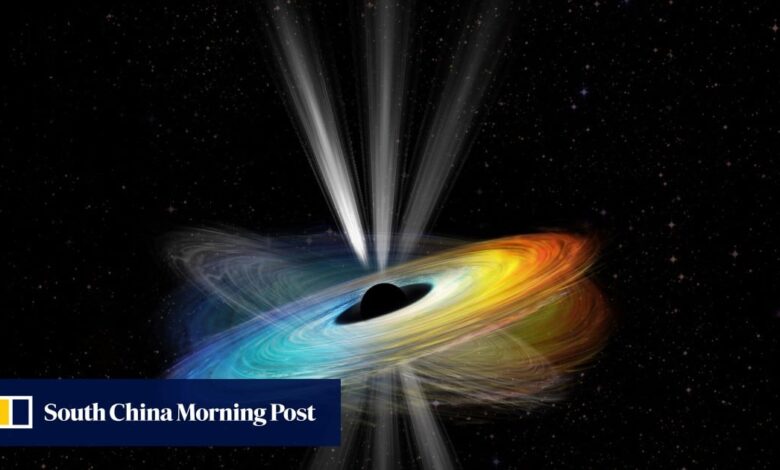Chinese-led research team finds evidence of spinning black hole

Sifting through more than 20 years of observation data from a global network of radio telescopes, the team – which included researchers from Japan, Italy, and the United States – found that a gigantic black hole in Galaxy M87 had been shooting off jets that wobbled like a spinning top.
It took about 11 years for the jets to complete one cycle, the team reported in the journal Nature on Wednesday.
“This is the first observational evidence to show that black holes not only spin, but they spin with a tilt,” said astrophysicist Gou Lijun from the National Astronomical Observatories of China in Beijing, who was not involved in the research.
“Such a discovery was only possible with the long-term accumulation and thorough analyses of observation data, showing how important it is for telescopes and astronomers to work together to advance our understanding of the universe.”
The spin of a gyroscope often involves two components – the rotation of the gyroscope itself, and a constant change in the orientation of the gyroscope’s rotational axis around a central point, a process known as precession, according to Gou.
Dr Who was right, Australia study finds: time really is ‘wibbly-wobbly’ stuff
Dr Who was right, Australia study finds: time really is ‘wibbly-wobbly’ stuff
For instance, the Earth rotates every 24 hours to make a day and night. Meanwhile, it completes a circular precession every 26,000 years – with its rotational axis now tilted by about 23 degrees relative to its orbit around the sun.
Scientists had used a bright, swirling ring of hot gas and dust around black holes to study their spin. Most black holes were found to be rotating extremely fast, some close to the speed of light, Gou said.
Going through details of the M87 black hole, Cui Yuzhu from Zhejiang Lab in Hangzhou and her colleagues noticed that its jet, which is made of particles spewed out by the black hole from its poles, appeared to be pointing at a different direction in 2017 compared with previous observations.
The researchers then pooled data collected between 2000 and 2022 from two dozen radio telescopes located in China, Japan, South Korea, Italy and Russia, Cui told state news agency Xinhua.
To their surprise, the jet showed a periodic swing, with a recurring cycle of about 11 years and a tilt angle of about 10 degrees.
To find out what was driving the jet’s precession, the team carried out theoretical analyses and numerical simulations with the help of a supercomputer at the National Astronomical Observatory of Japan.
Chinese scientists use quantum computing to simulate black hole
Chinese scientists use quantum computing to simulate black hole
“Detecting this precession provides unequivocal evidence that the supermassive black hole in M87 is indeed spinning,” the researchers wrote.
However, scientists still need to find out how fast the M87 black hole is spinning, and how they can use the insights to better understand the formation of supermassive black holes, a long-standing question in the field.
That would require further accumulation of observation data in multiple wavelengths in many years to come, so more evolution evidence might surface to help scientists connect the dots, they wrote.





